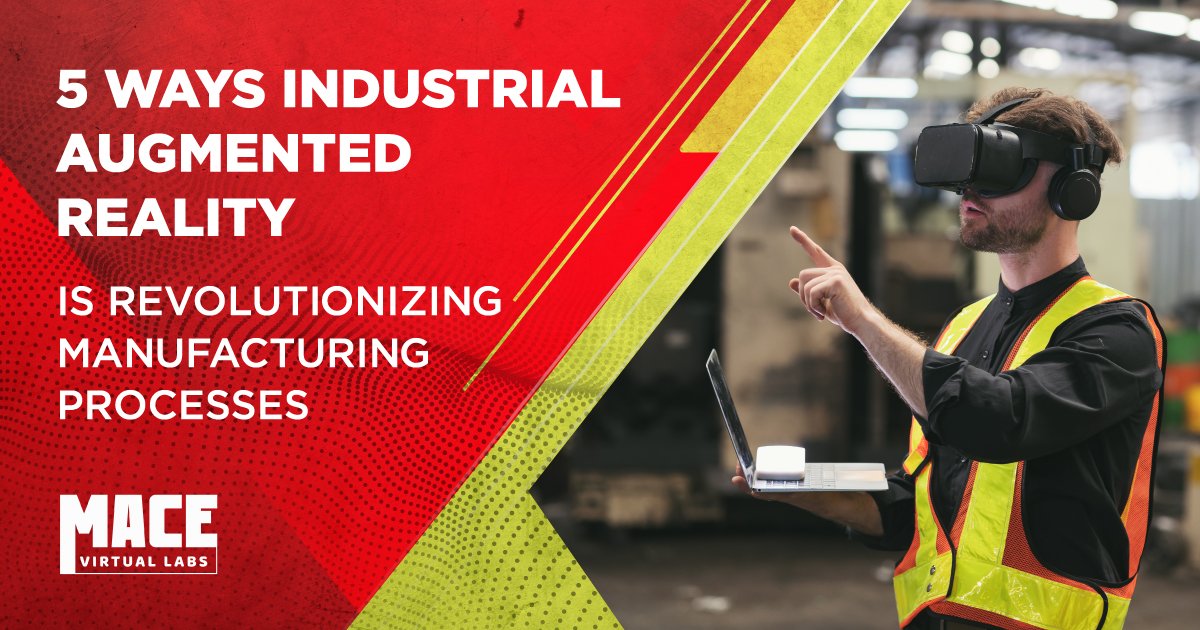5 Ways Industrial Augmented Reality is Revolutionizing Manufacturing Processes
If you work in industrial manufacturing and your business has yet to leverage augmented reality (AR), then the time to start is now. One could argue that AR solutions represent a revolution in manufacturing, allowing participants to test a variety of processes in the digital world before entering the real one.
When tailored to the needs of your manufacturing business, industrial AR solutions can streamline team training processes, enhance safety, and increase efficiency across the board.
Here’s how it works.
1. Enhancing Training and Skill Development
If you want workers to learn new skills more quickly and efficiently, then AR is a great place to start. With AR, you can create a variety of training modules and push them out to the relevant teams. Within these modules, employees can view instructions or diagrams overlaid onto real-world equipment, providing context beyond mere written words.
When paired with appropriate AR equipment, AR can also simulate real-world scenarios, giving employees the opportunity to practice in a safe and controlled environment. Immersive learning encourages collaboration and improves retention, helping your employees pick up and apply their new knowledge right away. Over time, management can also track employee performance over time, much like a digital classroom.
2. Improving Quality Control and Assurance
AR can also be used to run simulations of new initiatives and machinery, detecting product design flaws in real-time. For example, by displaying 3D models of products on the display of the smart glasses, manufacturing workers can more closely examine if components are assembled correctly. The AR module itself can also scan products for defects, providing a second layer of detection to identify and correct issues.
3. Boosting Maintenance and Repair Efficiency
No matter your industry, manufacturing equipment is expensive, and properly maintaining it will help you cut costs and ensure smooth day-to-day operations. With AR-guided instructions, your maintenance teams can more effectively learn the various standard operating procedures (SOP) for maintenance and repairs.
Through collaboration and repeated practice with these repair modules, you’ll also be able to pinpoint areas where team members consistently struggle. By iterating the SOP or emphasizing repeated practice in these areas, you can optimize and streamline the logistics of a repair or maintenance process.
4. Increasing Safety in Industrial Processes
In the same way that AR can be utilized to impart skill development, it can also be used to increase adherence to safety protocol.
In any industrial manufacturing setting, you’ll have emergency protocols in place for any number of scenarios–natural disasters, threats on the premises, and even catastrophic failure. Rather than having your teams read about these emergency protocols, you can run simulated emergency drills in immersive, full-dive virtual reality. This method increases the likelihood of retention.
AR also allows for practice in a no-risk environment. If mistakes are made, they’ll provide a purely teachable moment rather than injury to team members or damage to equipment.
5. Promoting Remote Collaboration and Assistance
Rooted in the digital world, AR programs allow for easy connection of teams across large distances. An expert in one city could log into a module and provide remote guidance to another team.
Once again, the efficiency lies within the ability to share the same AR vantage point. Rather than trying to explain an issue over the phone (a tactic that utilizes only words), teams can share the AR view of a machine as well as real-time data. This way, teams can simultaneously view real-time data such as the operating temperatures of machines, ultimately helping them troubleshoot issues more efficiently.
Explore the Possibilities in Industrial Augmented Reality
While augmented reality solutions can foster safety, efficiency, and collaboration in industrial manufacturing businesses, they are not a one-size-fits-all solution. In order to implement the right equipment and software to the needs of your business, you’ll want to lean on VR/AR experts.
At MACE Virtual Labs, our team of AR/VR experts can partner with your team to develop the solution for your needs. Whether you hope to streamline quality control or implement new training programs, MACE can help you build out the software and hardware solutions that meet your business goals. MACE can also help your team with the storage and cleaning of your AR equipment through our fleet management services.
AR and VR are revolutionizing the industrial manufacturing sector. To ensure your business isn’t left behind, contact MACE today for a free consultation.

